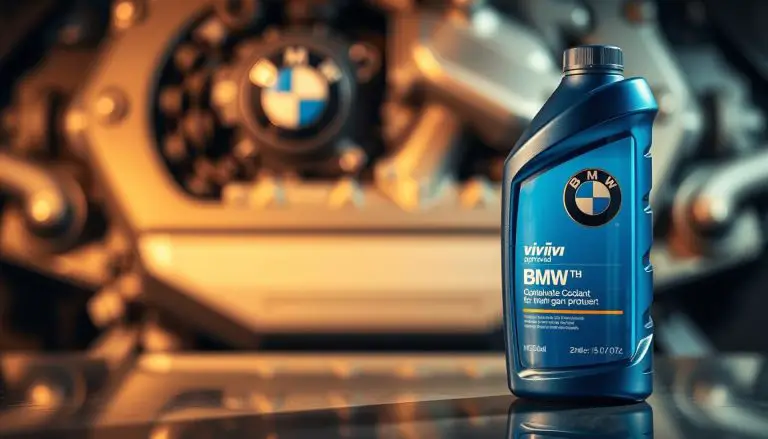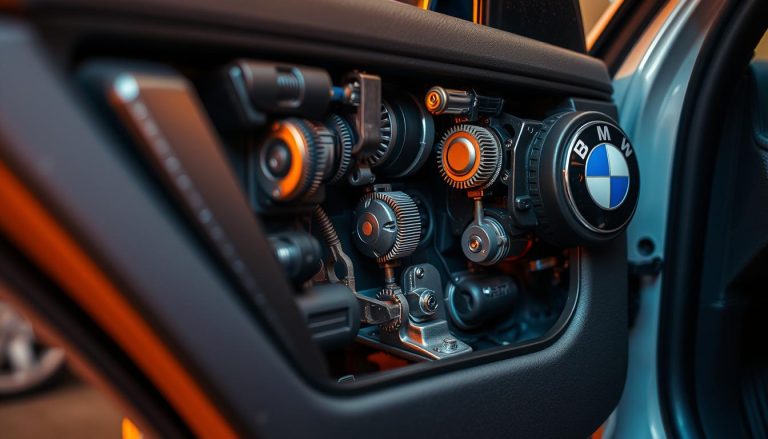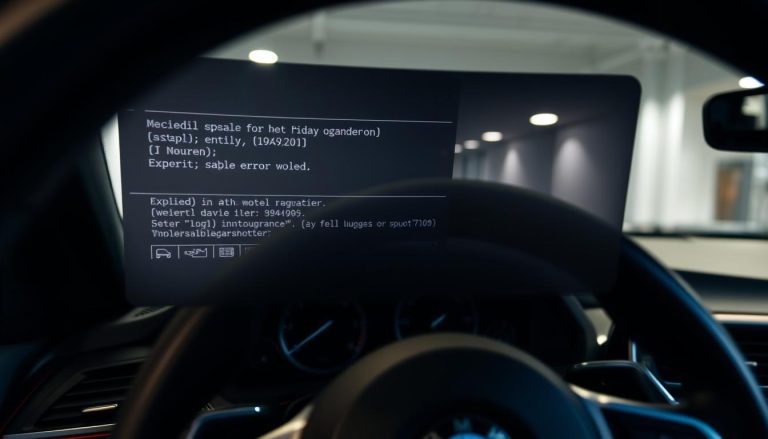Acquiring the ability to shift your BMW into neutral gear without initiating the engine is a skill of paramount importance. It is indispensable in scenarios such as towing or when confronted with an unforeseen emergency.
This proficiency not only safeguards your vehicle from potential damage but also guarantees your safety on the road. In specific circumstances, the capability to shift into neutral emerges as a pivotal step towards resolving issues expeditiously.
Key Takeaways
- Understand the importance of shifting into neutral gear without starting the engine.
- Learn how to apply this skill in emergency situations or when towing.
- Discover the steps to shift your BMW into neutral safely.
- Enhance your knowledge of BMW’s gear system.
- Improve your ability to handle your vehicle in various conditions.
Why You Might Need to Put Your BMW in Neutral
Several scenarios necessitate the knowledge of how to shift a BMW into neutral without starting the engine. This understanding is crucial for BMW owners, enabling them to navigate unexpected events and safeguard their vehicle’s integrity.
Towing and Emergency Situations
When a breakdown or accident occurs, towing a BMW becomes imperative. The ability to shift into neutral without starting the engine is vital for towing, preventing potential damage to the BMW transmission. This capability is essential in emergency scenarios, where swift relocation of the vehicle is critical.

Car Wash and Maintenance Scenarios
During car washes or maintenance, shifting the BMW into neutral is often a safety requirement. It allows for slight movement if necessary, without the engine’s operation, thus mitigating the risk of unintended vehicle movement.
Battery Failure Situations
Should the BMW’s battery fail, the ability to shift into neutral without starting is invaluable. It enables the vehicle to be manually moved to a secure location or a repair facility, circumventing the hazards associated with shifting a vehicle with a dead battery.
Understanding BMW Transmission Systems
Modern BMW models boast advanced transmission systems, including electronic shifters and the iDrive system, which have transformed driver-vehicle interaction. The transmission system is a pivotal component in any vehicle, and BMW exemplifies this with its sophisticated designs. Grasping the intricacies of these systems is imperative for the upkeep and troubleshooting of your BMW.
Traditional Automatic Transmissions vs. Electronic Shifters
Traditional automatic transmissions employ hydraulic systems for gear changes, whereas electronic shifters leverage electronic controls. Electronic shifters facilitate quicker and more precise gear transitions, elevating the driving experience. This transition to electronic controls has notably enhanced BMW’s performance and efficiency.
The distinction between traditional and electronic systems lies in precision and control. Electronic shifters can adjust to various driving styles and conditions, offering a more tailored experience. For example, BMW’s Steptronic transmission enables drivers to manually shift gears, blending the advantages of automatic and manual transmissions.
iDrive System and Gear Selector Types
The iDrive system, BMW’s advanced infotainment and control system, encompasses transmission management. It features a centralized control unit that enables drivers to modify settings, including transmission-related ones. The iDrive system enriches the driving experience with intuitive controls and customizable options.
BMW models exhibit diverse gear selector types, ranging from rotary dials to lever-style selectors. The selector type influences transmission control. For instance, some models employ a rotary dial that clicks into place for different gears, while others utilize a traditional lever.
Differences Between BMW Series and Model Years
BMW transmission systems exhibit variability across different series and model years. For example, newer models often incorporate more advanced electronic shifters and updated iDrive software. Recognizing these differences is essential for owners to effectively maintain and troubleshoot their vehicles.
| BMW Series | Transmission Type | iDrive Version |
|---|---|---|
| 3 Series | 8-Speed Automatic | iDrive 7 |
| 5 Series | 8-Speed Steptronic | iDrive 7 |
| X5 | 8-Speed Automatic | iDrive 6 |
The table illustrates that different BMW series are equipped with various transmission types and iDrive versions. This diversity underscores the necessity of consulting the owner’s manual or contacting a BMW dealership for specific information regarding your vehicle.

How to Put a BMW in Neutral Without Starting the Engine
Acquiring the skill to shift your BMW into neutral without engine activation is paramount for scenarios such as towing or maintenance. This technique, known as the “neutral override,” is indispensable for various situations necessitating vehicle movement without engine operation.
Step1: Accessing the Vehicle and Preparing the Shifter
Initiate by positioning your BMW in a secure, traffic-free area. Activate the parking brake to immobilize the vehicle. For most BMW models, accessing the gear selector and comprehending its operation is imperative. The gear selector resides within the center console. If your BMW features an electronic shifter, it will likely be in the “P” (Park) position. Prepare the shifter for the neutral override process.
In models equipped with the iDrive system, consult your owner’s manual for specific guidance on shifting into neutral without engine start-up. The manual will offer model-specific instructions.
Step2: The Neutral Override Procedure
The neutral override process exhibits slight variations across different BMW models and series. Generally, press and hold the brake pedal, then manipulate the gear selector to enter neutral. For electronic shifters, a button press or a specific sequence may be required to bypass the shift lock. A BMW technician notes, “The neutral override feature facilitates shifting into neutral even when the engine is off, simplifying towing or maintenance.”
“The neutral override feature is designed to provide flexibility in emergency situations,” said a BMW service expert. “It’s crucial to follow the correct procedure to avoid any damage to the transmission.”
For models such as the 3 Series or 5 Series, the procedure might entail pressing the shift button while simultaneously moving the gear selector to neutral. Always consult your owner’s manual for precise steps.
| BMW Series | Neutral Override Steps |
|---|---|
| 3 Series | Press shift button, move to neutral |
| 5 Series | Press and hold brake, shift to neutral |
Step3: Confirming Neutral Status and Safety Measures
Upon completing the neutral override procedure, verify that the vehicle is in neutral. Inspect the dashboard indicators or the gear selector position for confirmation. It is also imperative to implement safety measures, such as wheel chocking or parking brake application, to prevent vehicle movement.
Safety first: Prioritize vehicle security before attempting to shift into neutral without engine start-up. Inadequate precautions could lead to injury or damage.
By adhering to these guidelines, you can safely transition your BMW into neutral without engine activation, facilitating easier handling in towing or maintenance scenarios.
Model-Specific Instructions for Different BMW Series
BMW aficionados frequently inquire about the method to place their vehicle in neutral without initiating the engine, a query that elicits varied responses across the marque’s extensive model range. The heterogeneity within BMW’s portfolio, spanning from the compact 1 Series to the opulent 7 Series, and encompassing the pioneering i Series electric vehicles, underscores the imperative of model-specific guidance.
1, 2, 3, and 4 Series Models
The 1, 2, 3, and 4 Series, celebrated for their dynamic performance and agile handling, present a straightforward approach to neutralization. These models are typically outfitted with an electronic shifter, facilitating the activation of neutral override by pressing and holding the shift lever in the neutral position concurrently with the application of the brake pedal.
5, 6, 7, and 8 Series Luxury Models
The 5, 6, 7, and 8 Series, distinguished by their cutting-edge technology and sumptuous comfort, necessitate a nuanced understanding of their unique procedures. It is imperative to consult the owner’s manual or the iDrive system for precise instructions on neutral engagement without engine start-up. Certain models might necessitate the utilization of the neutral override function or the exploration of a concealed menu within the iDrive system.
X Series SUVs and Z Series Roadsters
X Series SUVs and Z Series roadsters, characterized by their distinct attributes and features, demand a tailored approach to neutralization. The procedure for these models mirrors that of other series, with a reliance on the electronic shifter. It is, thus, essential to refer to the model-specific documentation for accurate execution of the steps involved.
i Series Electric and Hybrid Models
The i Series electric and hybrid models, emblematic of BMW’s commitment to electrification, exhibit unique operational paradigms. The concept of “neutral” in these vehicles, propelled by electric motors, may diverge due to their distinct transmission configurations. Typically, these models are equipped with single-speed or multi-speed transmissions, necessitating specific button combinations or menu selections on the infotainment system for neutral engagement.
| BMW Series | Procedure for Neutral |
|---|---|
| 1, 2, 3, 4 Series | Electronic shifter with neutral override |
| 5, 6, 7, 8 Series | Consult owner’s manual or iDrive system |
| X Series SUVs, Z Series Roadsters | Similar to other series, refer to model documentation |
| i Series Electric/Hybrid | Specific button combinations or menu selections |
Troubleshooting and Safety Warnings
Addressing the challenge of placing your BMW in neutral is paramount, ensuring safety and averting potential damage. Various issues may surface, necessitating a thorough understanding of their resolution. This knowledge can significantly impact the outcome.
Common Problems and Their Solutions
Several prevalent problems include:
- Difficulty in shifting into neutral due to a faulty shifter or transmission issue.
- The car not remaining in neutral due to a mechanical or electronic fault.
To tackle these challenges, it is advisable to:
- Inspect the shifter and transmission for any signs of wear or damage.
- Refer to the BMW owner’s manual or seek professional assistance if the problem persists.
Important Safety Precautions When Vehicle is in Neutral
When your BMW is in neutral, adherence to safety precautions is imperative to avert accidents. Ensure the vehicle is positioned on a level surface and activate the parking brake. It is also crucial to remain vigilant of the surroundings to prevent any unintended movement.
When to Contact BMW Roadside Assistance
If the issue cannot be resolved, the next logical step is to contact BMW roadside assistance. They offer professional assistance in scenarios such as:
- Being stranded due to a transmission or shifter failure.
- Needing immediate towing or repair services.
Having the BMW roadside assistance contact information readily available can prove invaluable in such situations.
Conclusion
Acquiring the ability to place a BMW in neutral without initiating the engine is a skill of paramount importance, notably in emergency contexts or during maintenance operations. This discourse has elucidated the methodologies and precautions imperative for such an action, ensuring a safe execution.
It is essential to comprehend the intricacies of your BMW’s transmission system and the specific protocols pertinent to your model. The neutral override mechanism facilitates the transition into neutral without engine activation, a capability of immense utility during towing, car washes, or in scenarios of battery failure.
By adhering to the directives articulated within this guide, BMW proprietors can guarantee their personal safety and the safety of others. The proficiency in placing your BMW in neutral without engine start is a critical skill, transcending mere convenience, and proving invaluable in a myriad of scenarios.
For models such as the 1, 2, 3, and 4 Series, or the X Series SUVs, the procedure may exhibit minor discrepancies. It is advisable to consult your owner’s manual or reach out to BMW Roadside Assistance if ambiguity regarding the procedure for your specific vehicle persists.
FAQ
How do I shift my BMW into neutral without starting the engine?
To shift your BMW into neutral without starting, you must adhere to the specific neutral override procedure, which is model and year dependent. Consult your owner’s manual or the guide provided above for precise instructions.
Can I put any BMW model in neutral without starting the engine?
While most BMW models can be shifted into neutral without engine start, the method may vary by series, model year, and transmission type. Refer to the model-specific instructions in the guide or your owner’s manual for accurate details.
Why is it important to know how to put my BMW in neutral without starting?
Understanding how to place your BMW in neutral without starting is essential in various scenarios, including towing, emergency situations, car washes, and maintenance tasks, or when the battery fails. It is vital for your safety and the safety of others.
What safety precautions should I take when my BMW is in neutral?
When your BMW is in neutral, ensure it is positioned on a level surface. Apply the parking brake and, if necessary, use wheel chocks. Remain vigilant of your surroundings and monitor the vehicle to prevent accidents.
Can I tow my BMW if I don’t know how to put it in neutral without starting?
Towing your BMW without knowledge of the neutral override procedure is not advisable. If uncertain, refer to your owner’s manual or contact BMW roadside assistance for guidance to prevent vehicle damage.
Are there any common problems when trying to put a BMW in neutral, and how can I troubleshoot them?
Common challenges include difficulties with the shifter or the neutral override process. For solutions to these issues and safety precautions, refer to the troubleshooting section in the guide above.
Is it necessary to contact BMW roadside assistance if I’m having trouble putting my BMW in neutral?
If you encounter difficulties or are uncertain about the procedure, contacting BMW roadside assistance is advisable. They can provide professional assistance to ensure your safety and the integrity of your vehicle.


